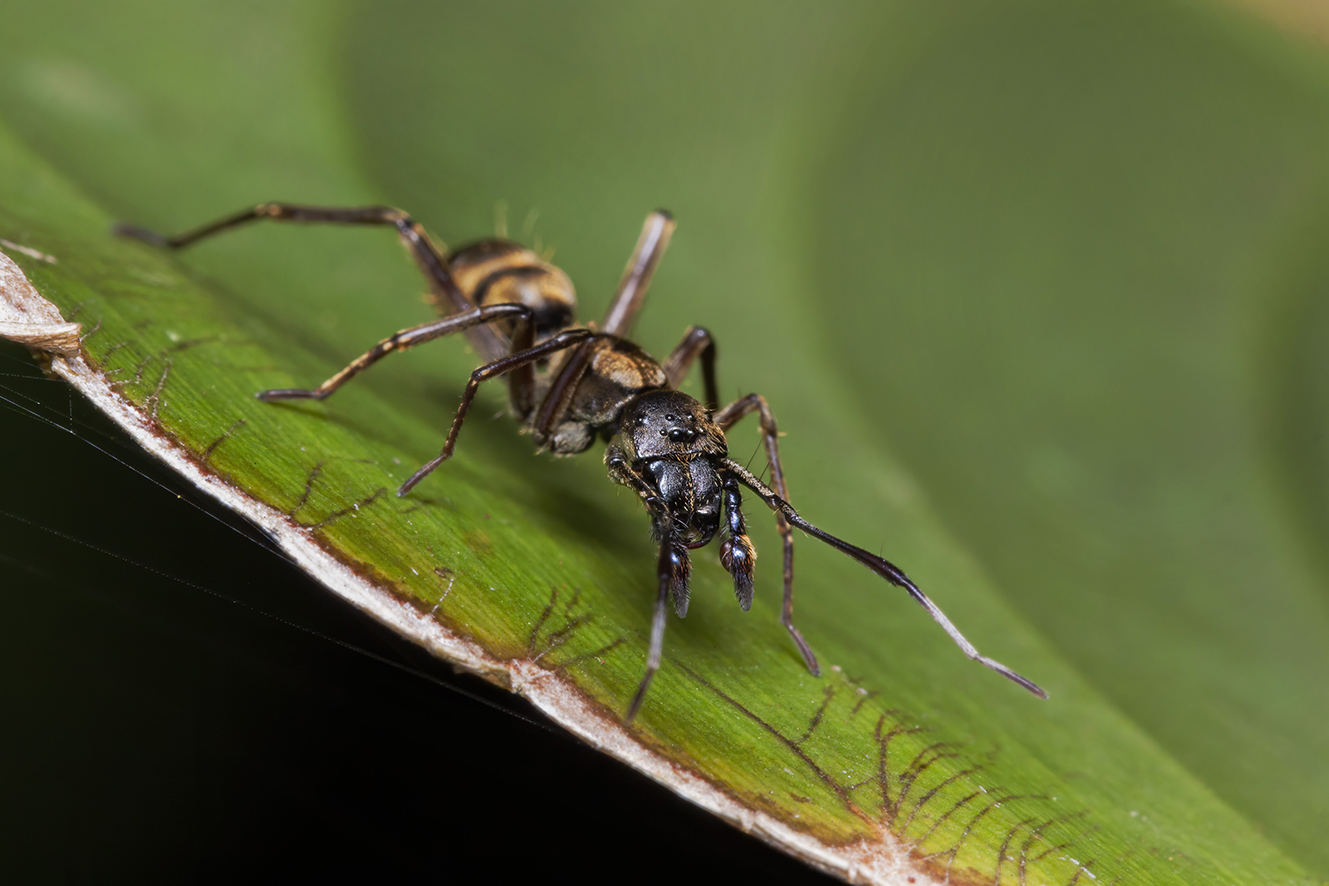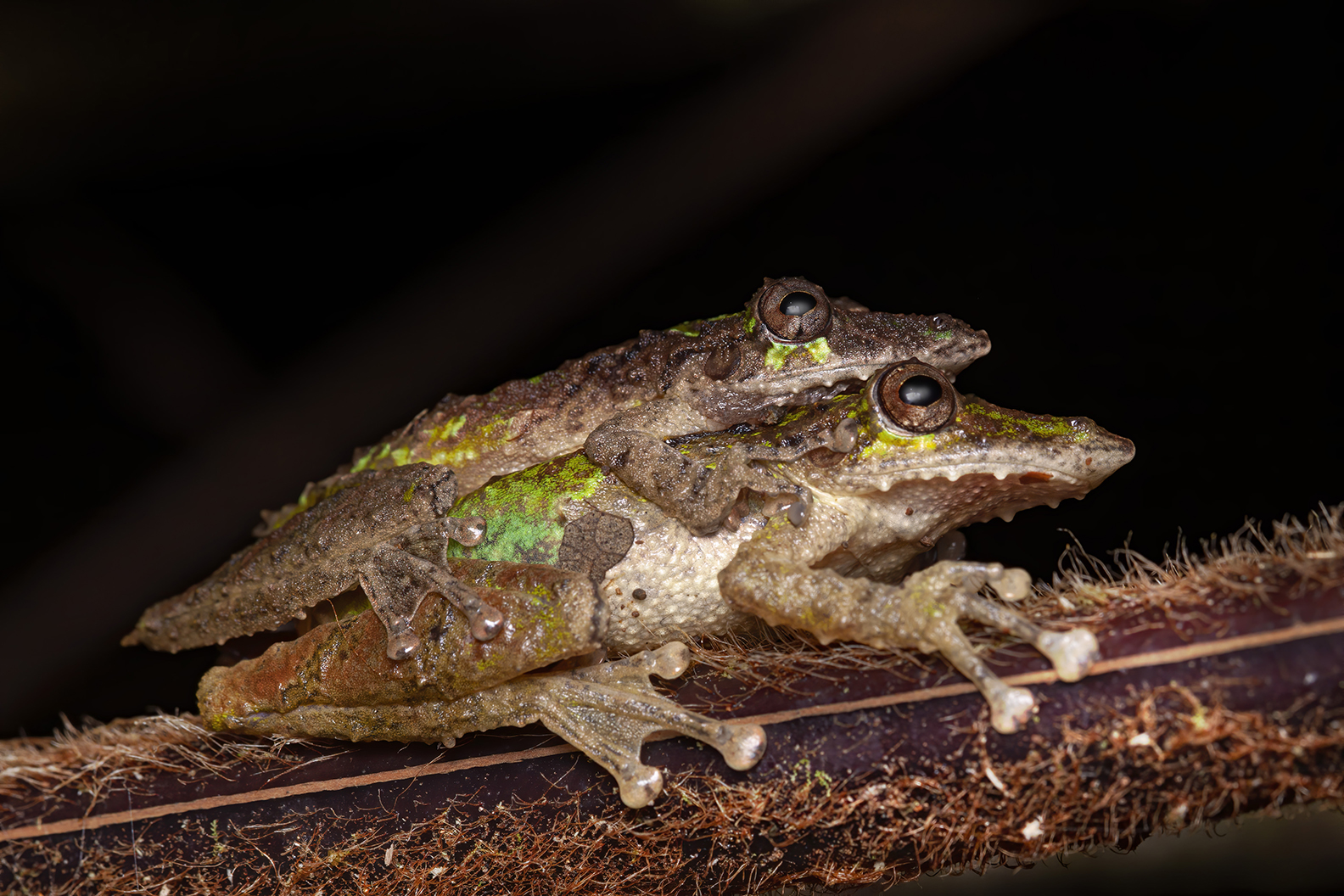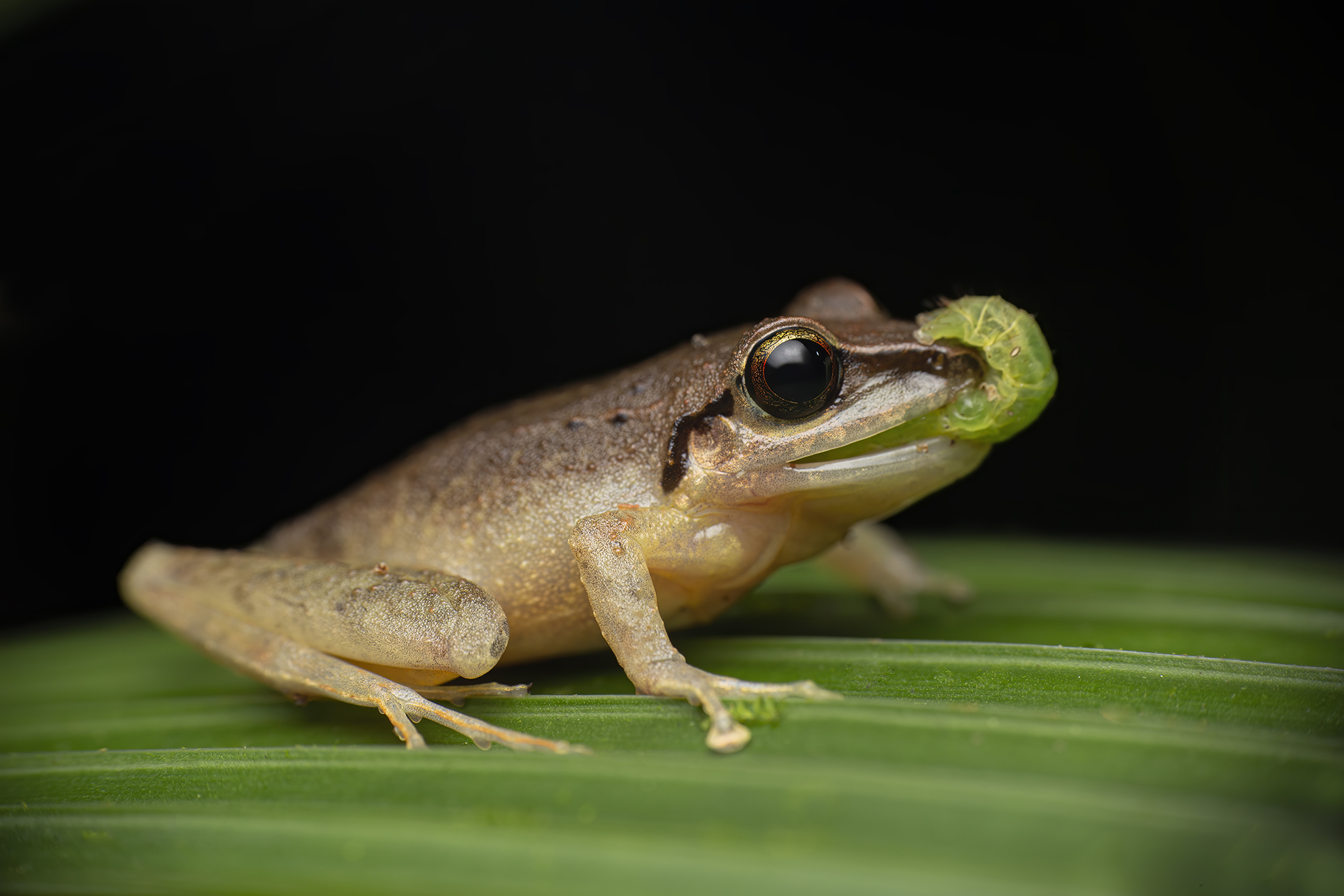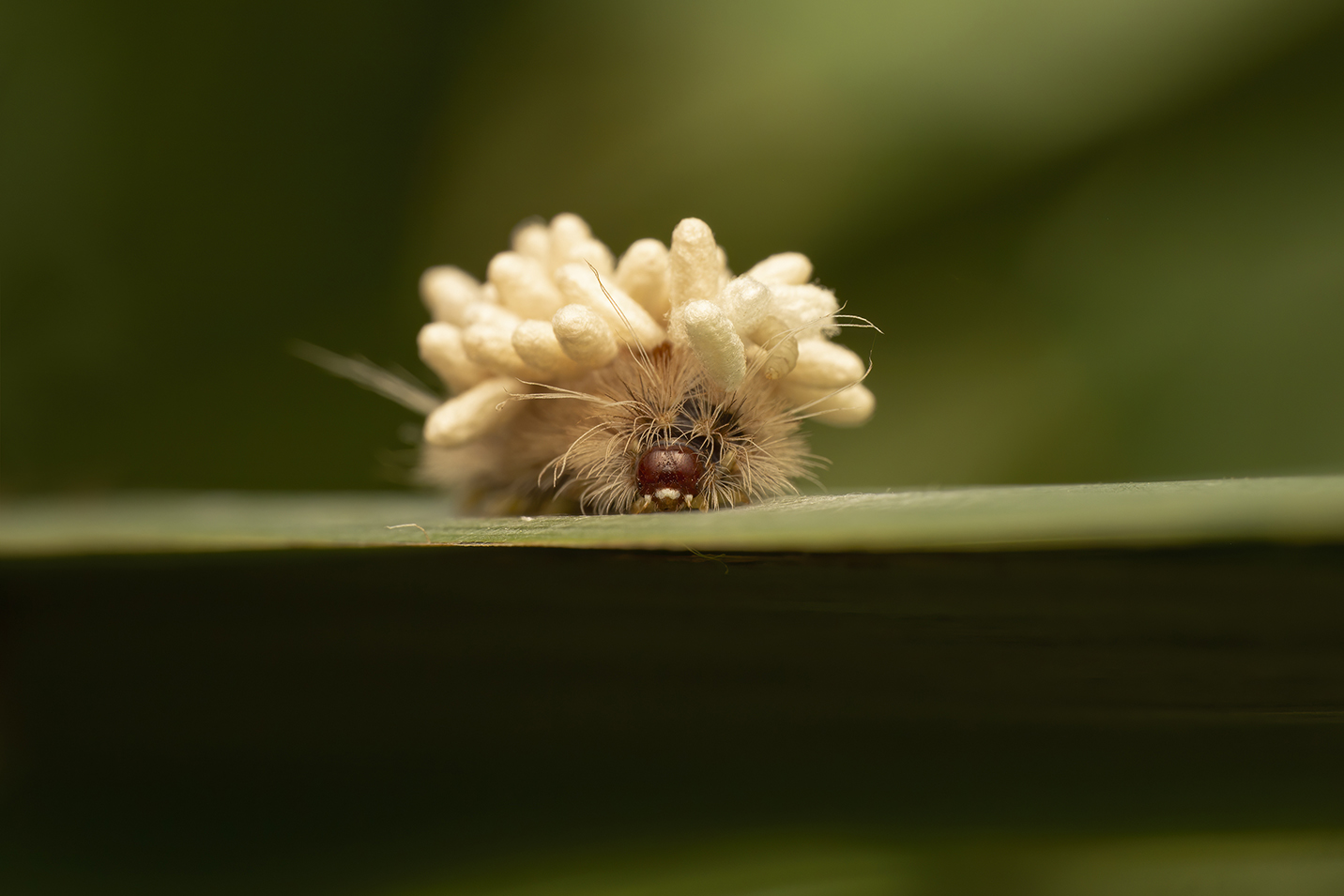Mimicry
And in this skill of simulation, mimicry appears, which happens when an animal copies another one’s strategy, uses it as a model. It is, for example, the case of animals that are not poisonous, but mimic the coloration of those who are, avoiding predators when making them to believe they are unfit for consumption, or dangerous.
As in the world of espionage, some arthropods use a technique tested by the secret services, which is to approach their prey without being noticed (predation mimicry), imitating patterns of the environment, imitating other individuals or imitating the behavior of their prey.
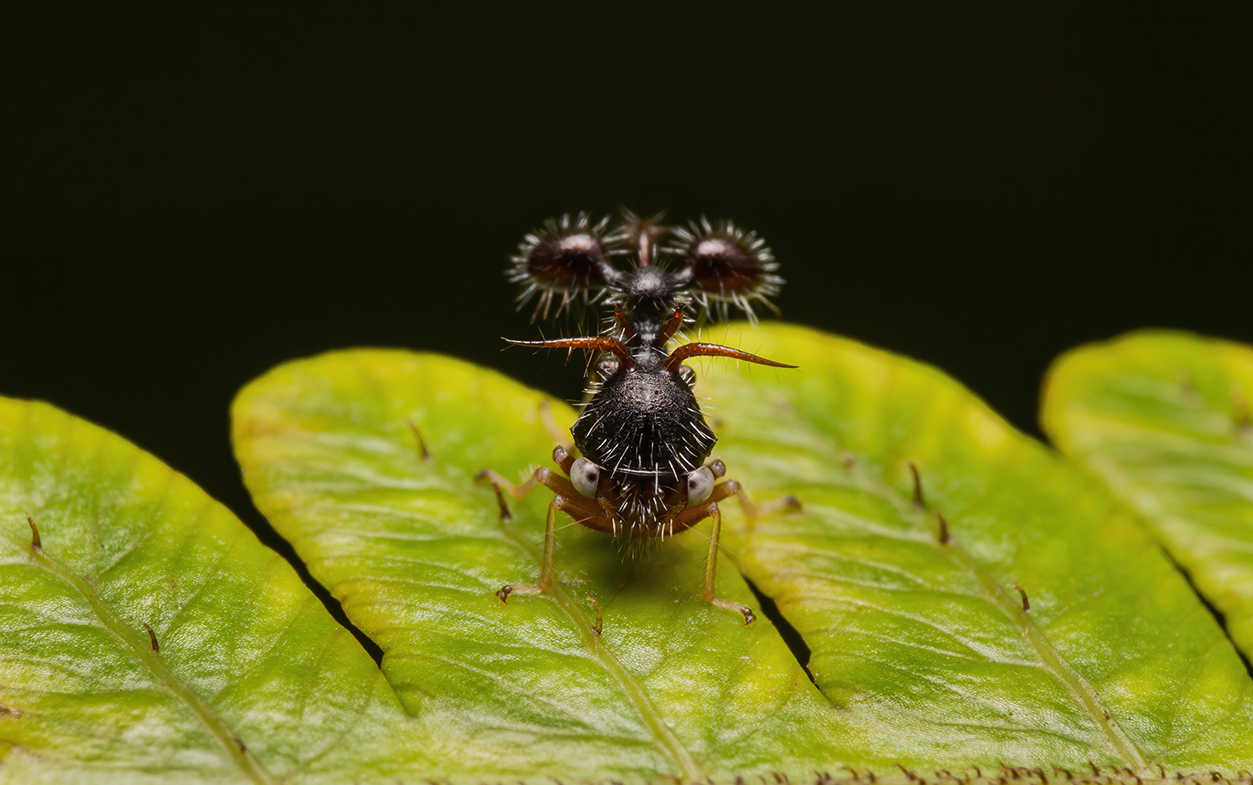

And here… An Ant mimicking tree hopper. Really strange, ha? They are really small also. They measure 3 mm approximately. You can find them in the branches of plants. And when you see it, they look like little ants…
And here a wasp!! Yes, a wasp!! She looks like a big ant, but actually, is a wasp, a female of a VELVET ANT, yes, we call them ant, but they are not. (Mutilidae) is a family of wasps. Where the males have wings, but females don’t have it. And females resemble ants.

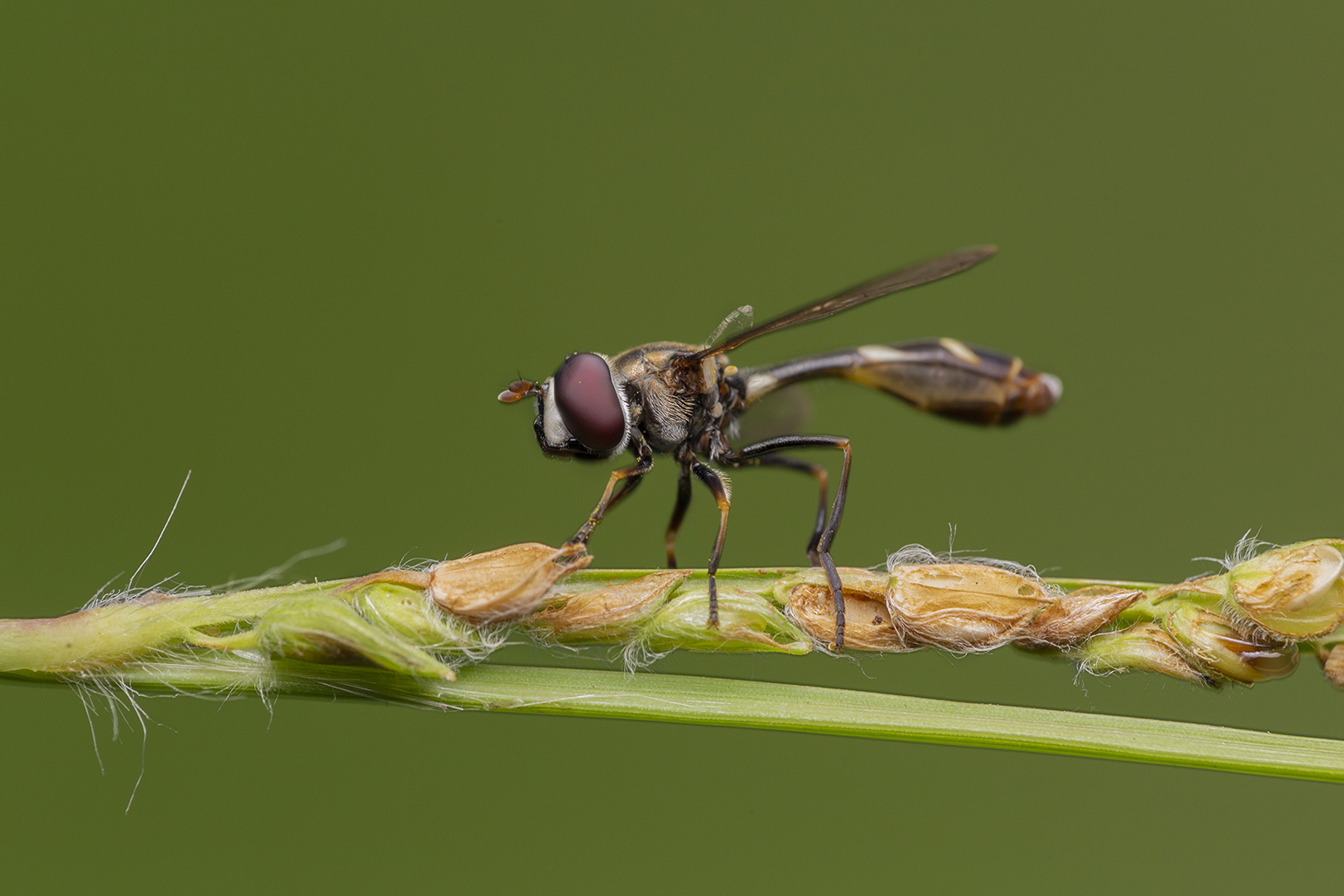
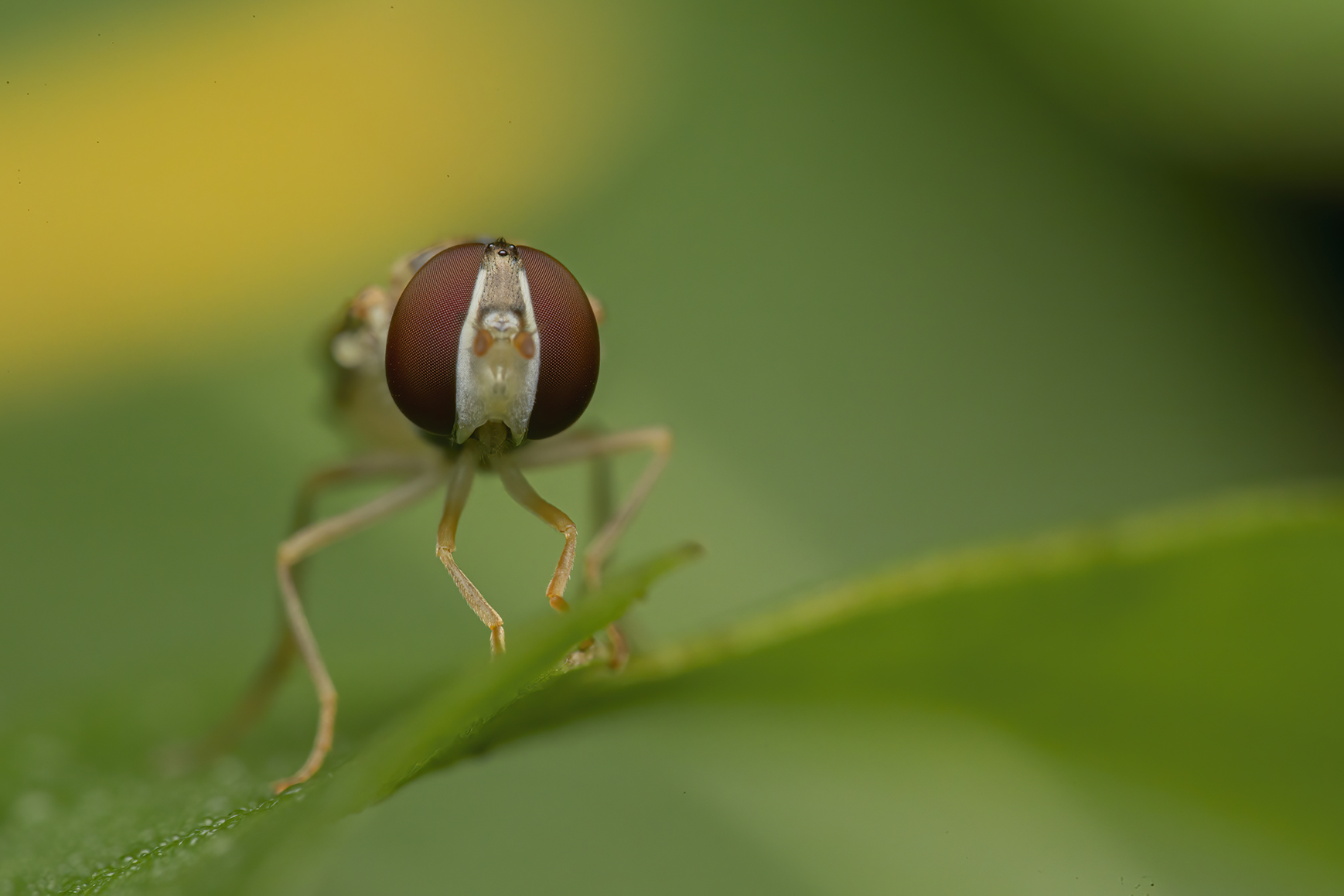
Hover flies (Syrphidae), also known as flower flies, are extremely agule fliers, capable of hovering in place and, in a split second, darting backward or sideways.
While many flies mimic wasps or bees to gain protection from predators, this family has the greatest number of examples
Ant mimicry is mimicry of ants by other organisms. Ants are abundant all over the world, and insect predators that rely on vision to identify their prey such as birds and wasps normally avoid them, either because they are unpalatable, or aggressive. Thus some other arthropods mimic ants to escape predation (protective mimicry). Conversely, some species use their anatomical and behavioral ant mimicry to hunt ants (aggressive mimicry).
Hera an ant mimicry spider. Male – Corinnidae
